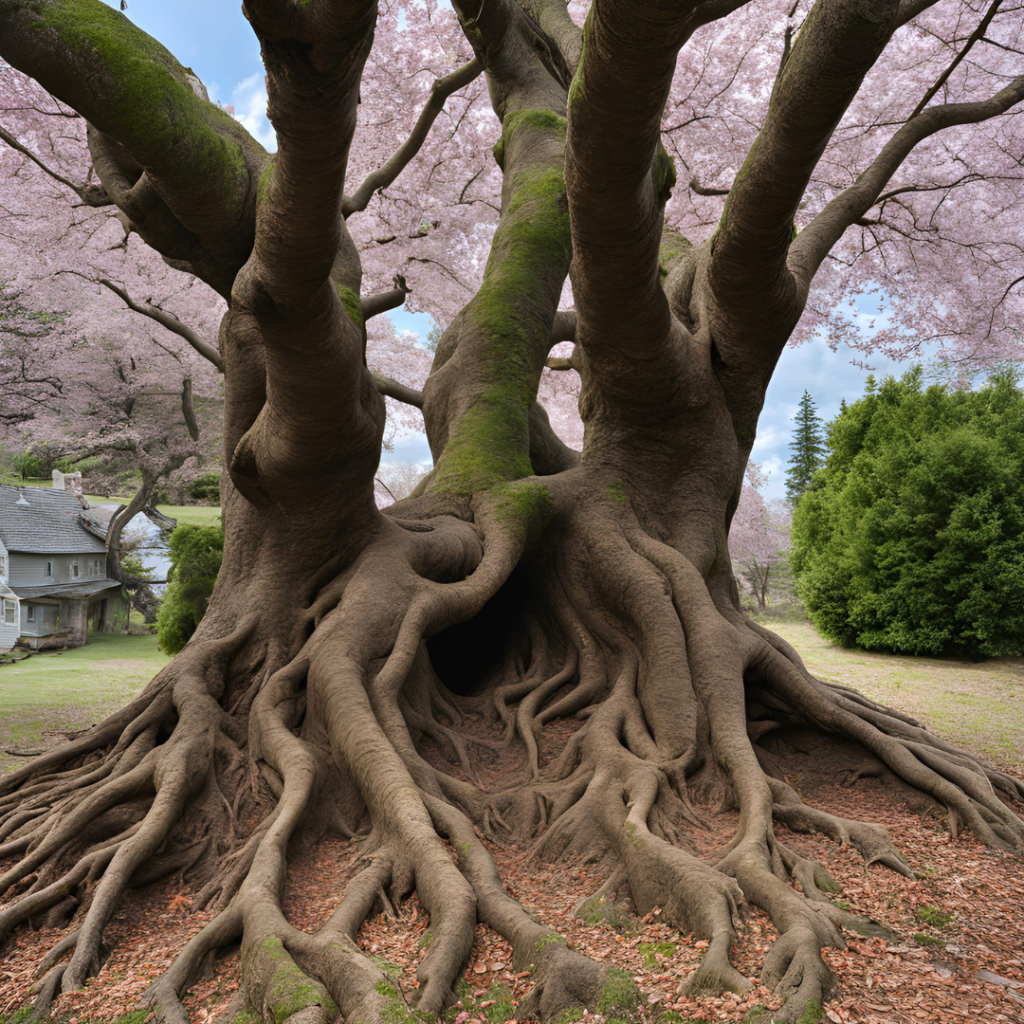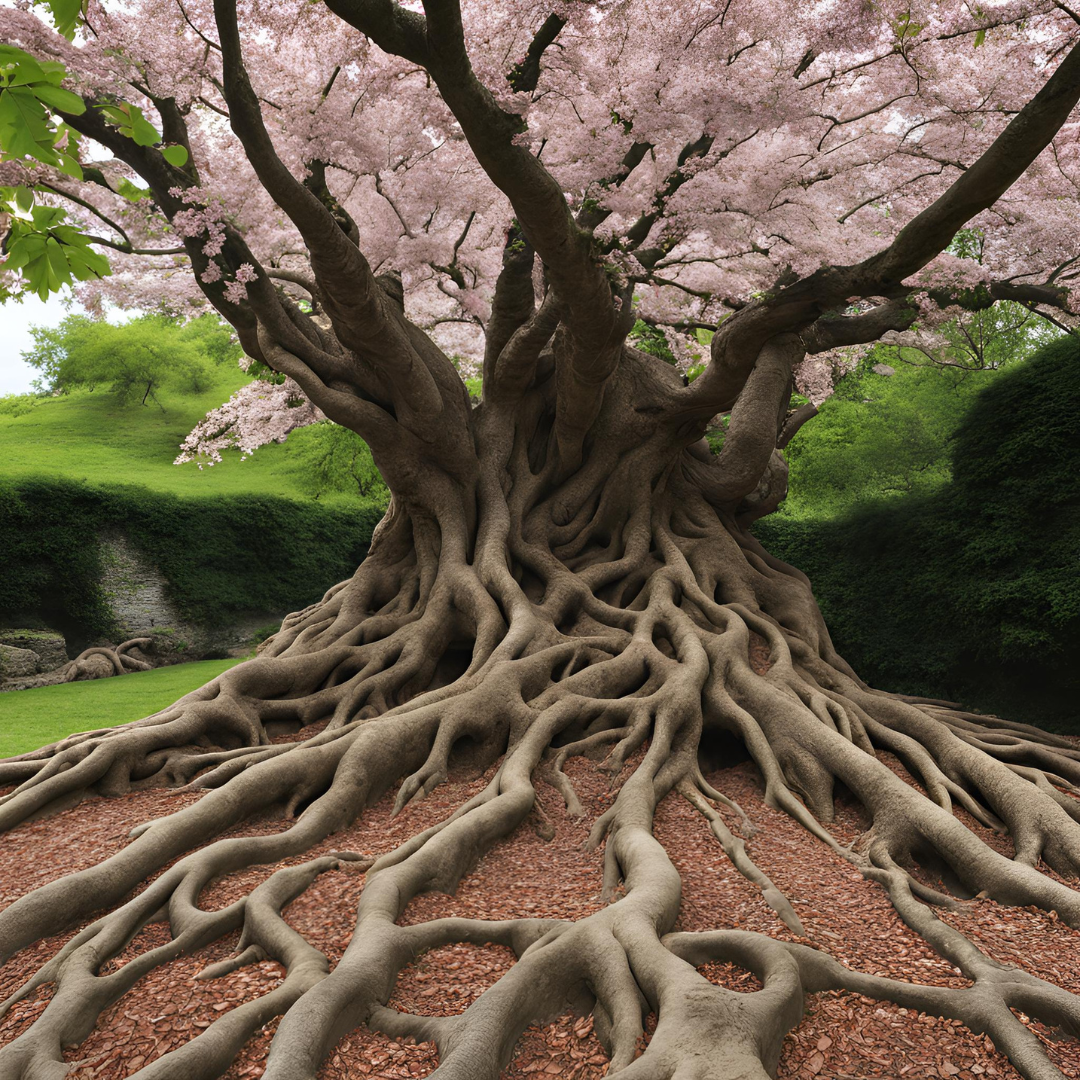Cherry trees are beloved for their beautiful blossoms and delicious fruit. However, for those who wish to plant them, understanding how far their roots spread is essential. This knowledge is crucial to ensuring that the tree has enough space to grow without causing damage to nearby structures or plants. In this article, we will explore the extent of cherry tree root systems, factors influencing their spread, and practical tips for managing these roots in your garden.
Understanding Cherry Tree Root Systems
Cherry trees, like many other trees, have root systems that vary in spread and depth based on several factors. Generally, the roots of a cherry tree are relatively shallow compared to other trees, often staying within the top three feet of soil. However, they can spread widely to support the tree’s growth and stability.
Types of Roots
Cherry trees have two main types of roots: taproots and lateral roots. The taproot is a thick, central root that grows downward, anchoring the tree and accessing deeper water sources. Lateral roots, on the other hand, spread horizontally from the tree, often extending far beyond the tree’s canopy.

Factors Influencing Root Spread
Several factors influence how far cherry tree roots spread. Understanding these can help you predict and manage the root growth effectively.
Tree Age and Size
The age and size of the cherry tree significantly affect root spread. Younger trees have smaller root systems, while mature trees can have extensive networks of roots. As the tree grows, its root system expands to support the increasing demands for nutrients and water.
Soil Type and Quality
Soil type plays a crucial role in root spread. Cherry trees prefer well-drained, loamy soils. In loose, well-aerated soils, roots can spread more easily and widely. Conversely, in compacted or clay-heavy soils, root spread may be restricted, leading to shallower and less extensive root systems.
Water Availability
Water availability is another critical factor. In regions with consistent rainfall or irrigation, cherry tree roots can spread further as they do not need to grow deep to access water. In drier areas, roots may extend deeper and spread more widely in search of moisture.
Environmental Conditions
Local environmental conditions, such as temperature, wind patterns, and nearby vegetation, can also influence root spread. For instance, trees in windy areas may develop more extensive root systems to anchor themselves firmly.
Typical Root Spread of Cherry Trees
While the exact spread of cherry tree roots can vary, a general rule of thumb is that the roots can extend up to one and a half times the tree’s height. For example, if a cherry tree is 20 feet tall, its roots could spread up to 30 feet from the trunk. However, this is a rough estimate and actual root spread can vary based on the factors discussed earlier.
Sweet Cherry vs. Sour Cherry
Different types of cherry trees may have varying root spreads. Sweet cherry trees (Prunus avium) generally have more extensive root systems compared to sour cherry trees (Prunus cerasus). This is partly due to their larger size and greater water and nutrient requirements.

Practical Tips for Managing Cherry Tree Roots
Managing cherry tree roots effectively can help prevent potential issues such as root damage to structures, competition with other plants, and soil erosion. Here are some practical tips for managing cherry tree roots in your garden:
Proper Spacing
When planting cherry trees, ensure they are spaced adequately apart. This allows each tree enough room to develop its root system without competing with neighboring trees. A common recommendation is to plant cherry trees at least 20 to 30 feet apart.
Root Barriers
Installing root barriers can help control the spread of cherry tree roots. These barriers are typically made of durable plastic or metal and are buried vertically in the ground around the tree. They redirect roots downward, preventing them from spreading horizontally into unwanted areas.
Mulching
Applying mulch around the base of the cherry tree can improve soil quality and moisture retention. Mulch also helps to suppress weed growth, reducing competition for nutrients and water. Spread a layer of organic mulch, such as wood chips or bark, about 3-4 inches thick, ensuring it does not touch the tree trunk directly.
Regular Pruning
Regular pruning of cherry trees can help manage root growth indirectly. By controlling the size and shape of the tree’s canopy, you can influence the overall energy distribution within the tree. Pruning helps maintain a balanced growth pattern and prevents the tree from becoming too large for its root system to support.
Monitoring Soil Moisture
Keeping an eye on soil moisture levels is crucial for healthy root development. Water the tree deeply and infrequently, encouraging roots to grow deeper in search of water. Avoid overwatering, as excessive moisture can lead to shallow root growth and increase the risk of root diseases.
Potential Issues with Cherry Tree Roots
While cherry tree roots are generally not as invasive as some other tree species, they can still cause issues if not managed properly. Being aware of potential problems can help you take preventive measures.
Root Damage to Structures
Cherry tree roots can potentially damage nearby structures, such as foundations, sidewalks, and driveways. To minimize this risk, avoid planting cherry trees too close to buildings or paved areas. Installing root barriers can also help protect structures from root intrusion.
Competition with Other Plants
Cherry tree roots can compete with nearby plants for water and nutrients. This competition can lead to poor growth and health of surrounding vegetation. To mitigate this, ensure adequate spacing between cherry trees and other plants and provide supplemental watering and fertilization if needed.
Soil Erosion
In areas with sloping terrain or loose soil, cherry tree roots can help stabilize the soil and prevent erosion. However, excessive root growth near slopes or embankments can also contribute to erosion if not managed properly. Planting ground cover plants or using erosion control measures, such as retaining walls or terracing, can help mitigate this risk.
Also Read : Are Cherry Blossom Tree Roots Invasive?
Conclusion
Understanding how far cherry tree roots spread is essential for successful planting and management. By considering factors such as tree age, soil type, water availability, and environmental conditions, you can better predict and manage root growth. Proper spacing, root barriers, mulching, pruning, and monitoring soil moisture are practical tips for managing cherry tree roots effectively.
While cherry tree roots can cause potential issues, such as root damage to structures and competition with other plants, these can be minimized with proper planning and care. By taking proactive measures, you can enjoy the beauty and benefits of cherry trees in your garden without the drawbacks of unmanaged root spread.
